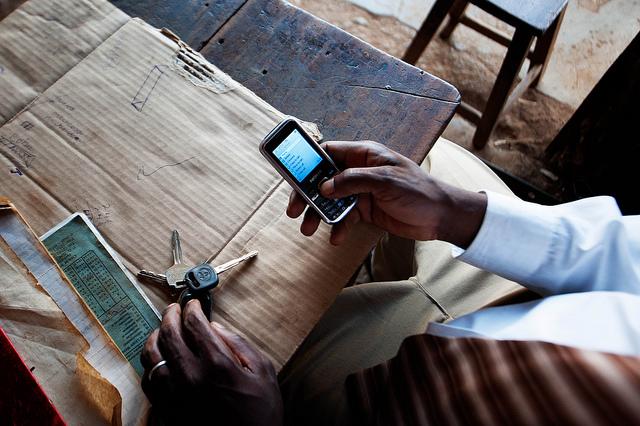Increasing Vaccination Coverage Using a Mobile Phone Application in Mozambique
- Health care providers
- Immunization
- Digital and mobile
- Health care delivery
- Nudges and reminders
- Preventive health
Vaccination programs are considered to be cost-effective strategies to reduce child mortality and morbidity, but in many low-income countries, coverage for routine vaccines remains low. This is due to a range of possible factors including low parent knowledge about the benefits of vaccination, inadequate vaccine supply, and poor supply chain management. In Mozambique, researchers are examining the effectiveness of a mobile application-based solution that uses mobile technology to overcome these challenges and improve vaccination coverage.
Policy issue
In 2012, 6.6 million children died globally before the age of five, many from vaccine-preventable diseases. Most developing countries have immunization programs, which are a cost-effective way to reduce child mortality and morbidity. However, in some of these countries, immunization rates for routine vaccines are still less than 80 percent. A major challenge is that many children do not complete the multiple-dose vaccination cycle and thus remain unprotected against these diseases. A variety of factors may contribute to low vaccination rates, including low knowledge among caregivers about the benefits of vaccination, high costs associated with visiting a health facility, and poor supply chain management of vaccines.
In recent years, several mobile health (mHealth) applications have been designed that leverage mobile phone penetration in developing countries to improve healthcare access and dissemination of health-related information. However, there is limited evidence on the effectiveness of these solutions for improving health outcomes. This study evaluates whether “mVacciNation”, a mHealth solution designed to both communicate information about immunizations to caregivers and improve vaccine supply chain management within the health system, can help increase vaccination coverage in Mozambique.
Context of the evaluation
In many parts of Mozambique, vaccination coverage for several routine vaccines is less than 75 percent, which contributes to the country’s high under-five mortality rate of 97 deaths per 1,000 live births. A major challenge is the drop-off between the first and subsequent doses of a vaccine. In particular, this study looks at the diphtheria, tetanus, and pertussis (DTP) vaccine, a three-dose vaccine administered to infants. The last dose (DTP3), is administered 14 weeks after birth. In many parts of Mozambique, over 90 percent of children receive DTP1, but fewer than 80 percent receive DTP3.
Vodafone, a mobile phone service provider, introduced the mVacciNation application to address two key challenges that result in incomplete DTP3 vaccination cycles: poor supply chain management at both the facility level and the district level and low patient compliance. Nampula Province, where the study takes place, has low DTP3 vaccination coverage and a relatively large population of mobile phone users, making it an appropriate place to test the impact of the mVacciNation application.

Details of the intervention
In partnership with the Mozambique Ministry of Health, researchers are conducting a randomized evaluation to examine the impact of Vodafone’s mVacciNation application in improving vaccination coverage rates for DTP3 in Nampula Province. The sample consisted of 151 rural health facilities in Nampula province that offer vaccination services and have mobile phone network access. Researchers will randomly select half of these health facilities to receive the application.
Researchers expect the application to improve vaccination coverage through two channels:
-
Facility-level supply chain management: Facilities with the application will be able to digitize information on vaccine demand, stocks, and storage. In addition, these facilities will also receive a warning text message from the application if their DTP3 stock is running low. Researchers will track whether health facilities using mVacciNation are better able to align their stock orders with anticipated needs, resulting in fewer DTP3 vaccine stock-outs.
-
Patient compliance: The application also sends automated message reminders to caregivers on upcoming vaccination events and locations where they can get their child vaccinated. Expecting mothers who visit a health facility, for a prenatal check-up or other types of care, will be automatically enrolled to receive SMS reminders. In order to measure the impact on immunizations, researchers will survey approximately 40 caregiver households with children ages 3-15 months in the catchment areas of both health facilities using the application and those acting as a comparison group and track the immunization rates.
Researchers will also test the effect of varying the content and the channel of the messages sent to caregivers through the mVacciNation application on immunization rates. In addition, all health facilities in a district outside of the study sample will receive the application and researchers will use qualitative methods to look at the application’s impact on the supply chain between the district vaccine office and local health facilities. Results from all components of the study will inform the decision to scale-up the application across the country.
Results and policy lessons
This evaluation was cancelled after the start of fieldwork; no results are expected.